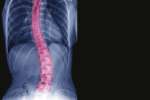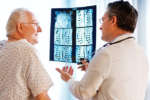The central nervous system of the human body is vast, containing approximately 100 billion neurons and about 45 miles of nerves. It’s no wonder that throughout your lifetime you may experience some kind pain involving your head or spine.
When the root of the nerve is compressed or damaged, you may experience symptoms near the point of the damage and radiating out to other parts of your body, like down your legs or arms. Your pain will depend on the location of the damaged nerve.
Your spine consists of bony vertebrae with a cushioned disc between each vertebrae. These discs act as a type of shock absorber and, together with the vertebrae, they protect the spinal cord. The spinal column is also held together with a system of ligaments and tendons that allow you to bend and stretch and stand upright. All of these parts work together and disruption of any part can cause pain.
The spinal column is divided into 4 distinct regions:
- The first 7 vertebrae are located in the neck and referred to as the cervical vertebrae
- The next 12 vertebrae, the thoracic, are located in the upper back
- The 5 lumbar vertebrae are located in the lower back
- The sacrum and coccyx are fused bones, found at the base of the spinal column, often called the tailbone.
Most people will report lower back pain at some point in their lives. The normal aches and pains of life do not require a visit to the doctor - rest, ice and heat rotation, and over the counter anti-inflammatories normally take care of the pain. If the pain persists you should see a doctor. Other symptoms that should be seen by your doctor are:
- New pain in an elderly patient
- Pain that does not go away at night or when lying down; especially if the pain wakes you from a sound sleep
- Weakness in one or both legs
- Problems emptying your bladder
- Pain that radiates through one or both of your legs
- Pain accompanied by unexplained fever or weight loss
Your doctor may order tests to confirm a diagnosis. Treatments may include a combination of medicines and physical therapy. It is important to follow your doctor’s orders carefully. The doctors of NewSouth NeuroSpine are specially trained in the care of the central nervous system.






